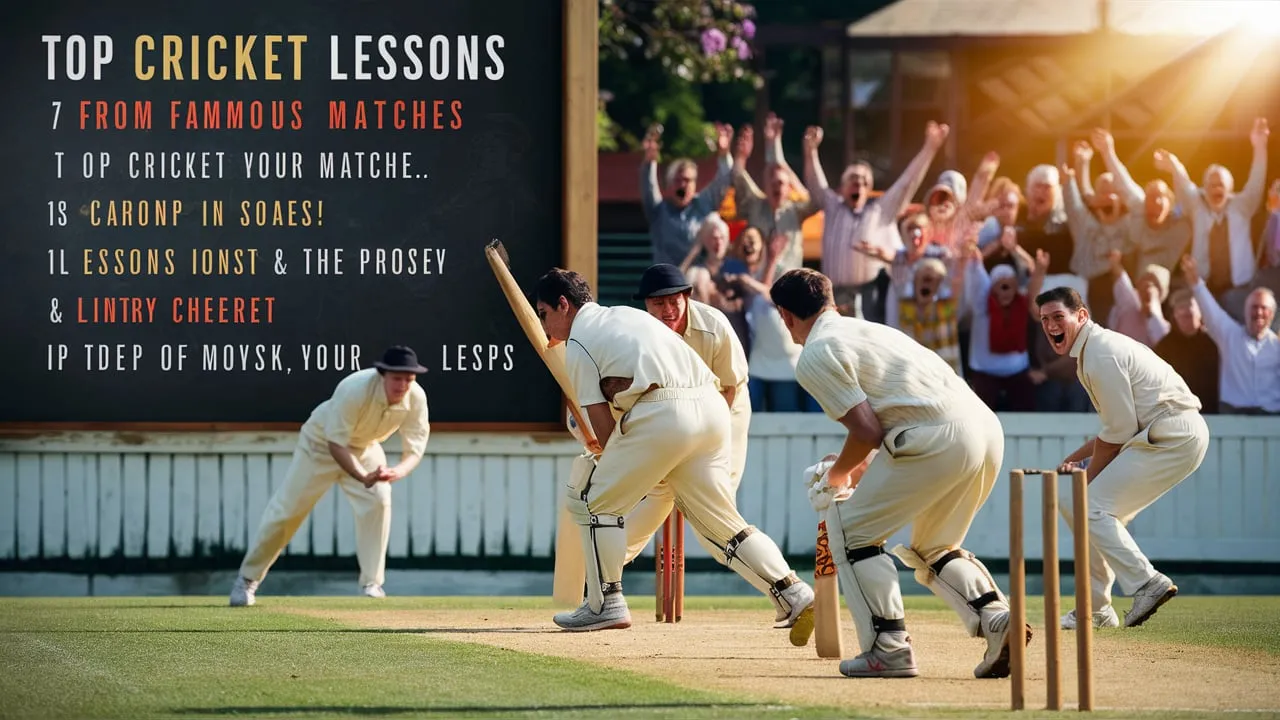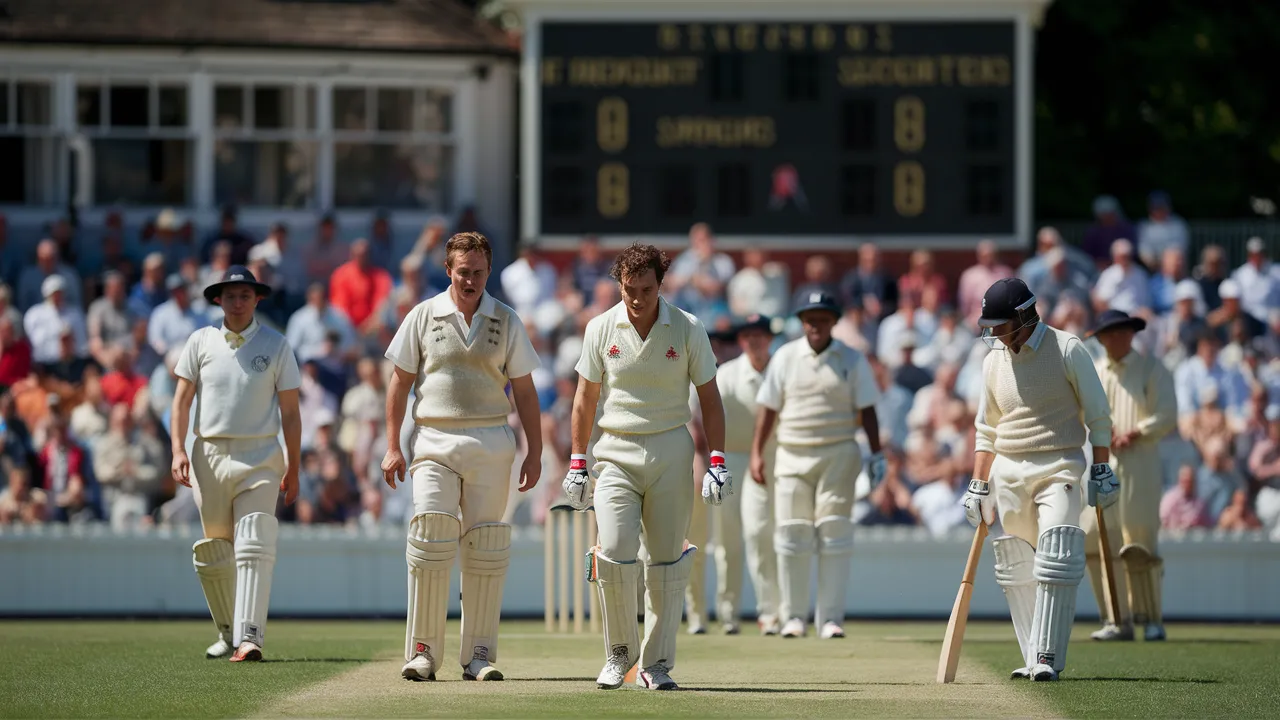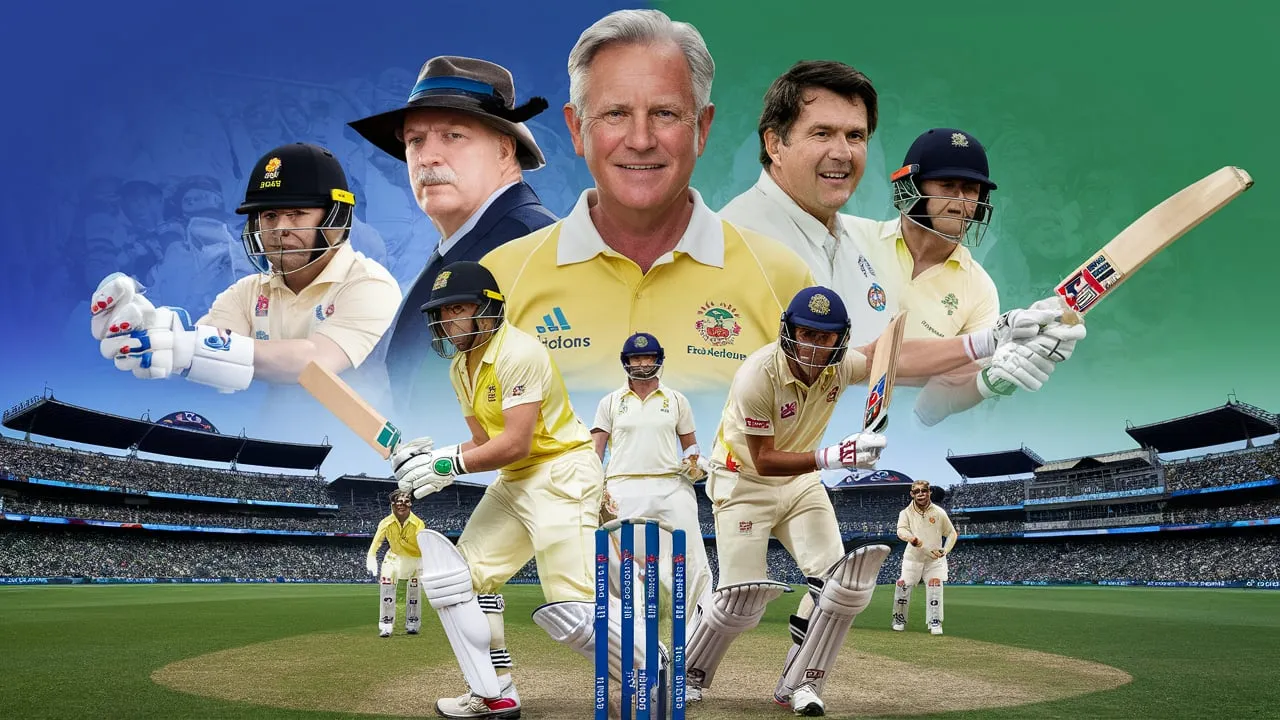Introduction
Cricket, a sport celebrated worldwide for its blend of skill, strategy, and endurance, has been the stage for countless thrilling and historic matches. Each game showcases not just talent but also the critical tactics and mental resilience that define champions. This article delves into some of the most famous cricket matches across history, analyzing their strategic elements, turning points, and the lessons they offer for players, coaches, and enthusiasts.
With over 2.5 billion cricket fans globally, as noted by the ICC’s global market survey, interest in the sport spans continents, cultures, and generations. Whether it’s a legendary World Cup final, a grueling Ashes Test, or an unexpected upset, each match offers unique takeaways. In examining these iconic games, we gain insights into cricket’s technical, strategic, and mental dimensions—insights that continue to resonate in the ever-evolving landscape of the sport.

Historical Importance of Cricket Matches: Why Analyze the Classics?
Analyzing historic matches goes beyond recounting memorable moments; it reveals the tactical decisions that have come to shape cricket as we know it. Understanding these dynamics is essential for aspiring players, strategists, and even fans seeking a deeper appreciation of the game. Additionally, from a statistical standpoint, cricket is a data-rich sport. Over 400 million data points, ranging from ball speed to batting averages, were analyzed during the 2019 Cricket World Cup alone, exemplifying the depth at which modern cricket operates.
Lessons in Strategy: Analyzing Iconic Matches
1. The 1983 World Cup Final: India vs. West Indies – Underdog Triumph
In a surprising and historic win, India defeated the two-time defending champions, West Indies, by 43 runs. This victory, which established India as a formidable cricketing nation, serves as an example of how mental toughness, adaptive strategy, and effective teamwork can overcome seemingly insurmountable odds.
Key Takeaways:
- Adaptability: India’s ability to adapt to conditions at Lord’s gave them an edge. Despite a low total of 183, they maximized field placements and bowler matchups to keep the West Indies from scoring freely.
- Teamwork and Morale: Under Kapil Dev’s leadership, India played with a cohesive spirit that compensated for individual skill disparities against a stronger opponent.
2. The 2005 Ashes Series: England vs. Australia – Masterclass in Test Cricket
Considered one of the most gripping Test series ever, the 2005 Ashes saw England reclaim the urn after 16 years. This series taught valuable lessons about sustained intensity, the role of individual brilliance, and the importance of capitalizing on momentum in long-form cricket.
Key Takeaways:
- Sustained Intensity: Test matches demand physical and mental endurance. England’s relentless pressure over five games showed the importance of maintaining focus and resilience.
- Balanced Attack: England’s well-rounded bowling, led by Andrew Flintoff, offered insights into managing diverse bowling strategies to break down Australia’s batting lineup.
Batting Brilliance: Lessons from Memorable Innings
1. Brian Lara’s 400* (West Indies vs. England, 2004) – The Pinnacle of Patience and Skill
Brian Lara’s record-breaking score of 400* remains a benchmark of patience, skill, and mastery in batting. Lara’s performance was marked by an incredible concentration span, lasting 778 minutes.
Key Takeaways:
- Patience in Batting: High scores are often built on a foundation of patience and smart shot selection. Lara’s innings was a masterclass in waiting for the right deliveries and avoiding unnecessary risks.
- Shot Placement and Timing: Instead of relying on pure power, Lara’s precision and shot placement exemplified a balanced approach that all players can learn from.
2. MS Dhoni’s 91* in the 2011 World Cup Final – Handling Pressure with Confidence

Under immense pressure in front of a home crowd, MS Dhoni played a decisive knock that led India to victory in the 2011 World Cup final against Sri Lanka.
Key Takeaways:
- Pressure Management: Dhoni’s calm demeanor under pressure and his calculated risks demonstrate the importance of psychological strength in high-stakes matches.
- Leadership: Dhoni’s decision to promote himself up the batting order showed proactive thinking and the value of decisive leadership in crunch moments.
Key Bowling Performances: Turning Points in Bowling Strategy
1. Anil Kumble’s 10/74 (India vs. Pakistan, 1999) – Consistency and Control
Kumble’s 10-wicket haul in a single innings against Pakistan showcases the impact of controlled aggression and precision in bowling.
Key Takeaways:
- Control and Discipline: Kumble’s ability to consistently bowl to a plan highlights the importance of line, length, and control in creating opportunities for wickets.
- Variation: Mastery over subtle variations can be more effective than extreme pace or spin, as Kumble demonstrated by subtly adjusting his speed and angle.
Tactical Decisions: Lessons from Captains
1. Steve Waugh’s Mental Toughness – The Art of Winning Mind Games

Known for his steely resolve, Steve Waugh mastered the psychological aspects of cricket, famously coining the term “mental disintegration” to describe his approach to unsettling opponents.
Key Takeaways:
- Psychological Tactics: Captains often use mind games to gain an upper hand, unsettling opponents’ concentration and focus.
- Team Cohesion: Waugh emphasized backing his players, a leadership quality that fosters morale and unity.
Data-Driven Cricket: Modern Lessons from Historic Games
Cricket has increasingly become a data-centric sport, where insights from analytics can transform gameplay. In fact, teams today analyze over 200 data points per match to make real-time decisions.
- Shot Prediction Models: In T20 formats, predictive analytics aids players in choosing high-percentage shots and field placements, increasing scoring efficiency.
- Injury and Fatigue Management: Data on workload and fatigue helps prevent injuries, extending careers and improving performance.
People Also Ask
What are the greatest cricket matches in history and why?
Some of the greatest cricket matches include the 2005 Ashes series between England and Australia, known for its dramatic contests, and the 2019 Cricket World Cup final between England and New Zealand, which was decided by a super over and highlighted the importance of resilience and composure.
What lessons can cricket players learn from legendary matches?
Players can learn the importance of teamwork, staying calm under pressure, strategic adaptability, and the value of never underestimating the opponent. Legendary matches often show that victory can hinge on a single pivotal moment or decision.
How do strategies in historic cricket matches influence modern gameplay?
Modern gameplay is heavily influenced by past strategies such as aggressive field placements, innovative bowling variations, and batting approaches like pinch-hitting. Teams study these matches to refine their tactics and adapt them for contemporary formats like T20 cricket.
Who are the key players that changed the outcomes of iconic cricket matches?
Players like Ben Stokes in the 2019 World Cup final and Brian Lara during his record-breaking innings against Australia in 1999 are prime examples of individuals who altered the course of matches with exceptional performances under high pressure.
Conclusion: Applying Lessons from the Greats
Historic cricket matches offer more than just thrilling memories; they encapsulate timeless lessons in strategy, resilience, and teamwork. By examining iconic games, today’s players and strategists gain valuable insights into the nuances of cricket—insights that translate not only into success on the field but also into enduring cricketing wisdom.
As we witness new records being set and strategies evolving, remembering these classic matches ensures that cricket’s legacy remains a guiding beacon for future generations.




